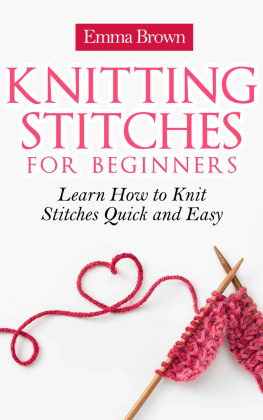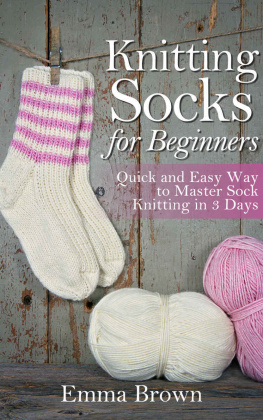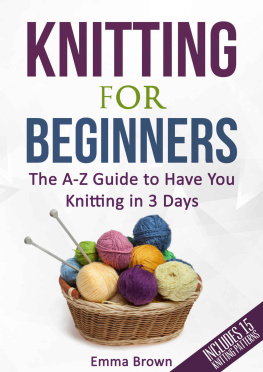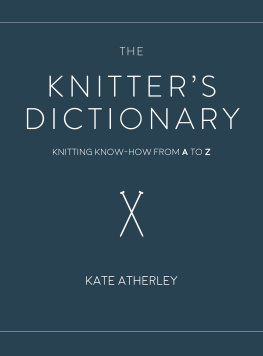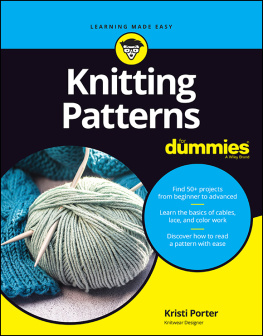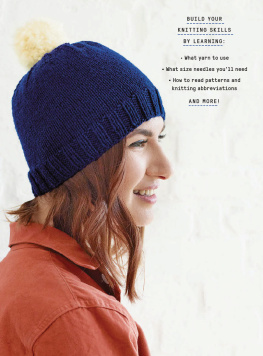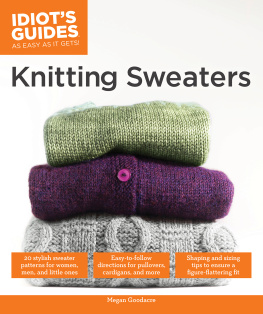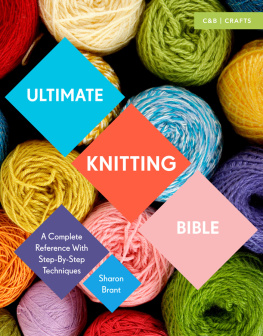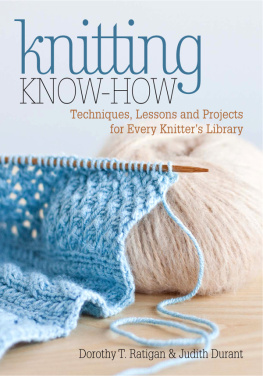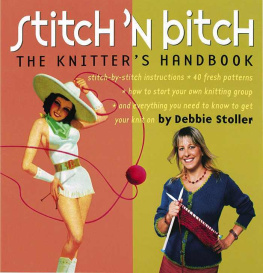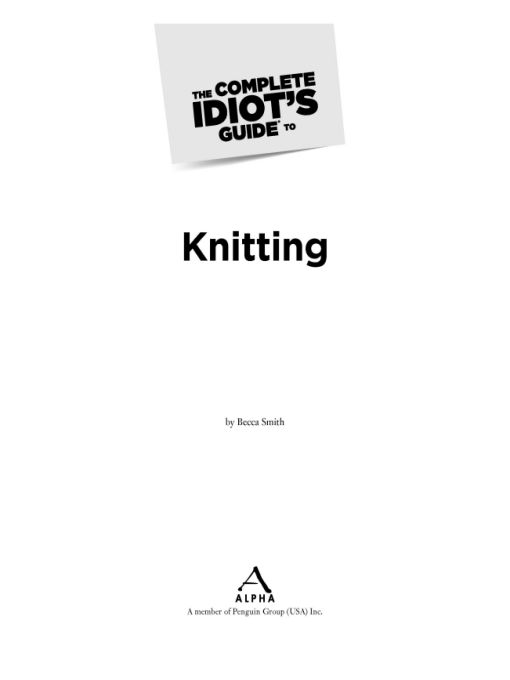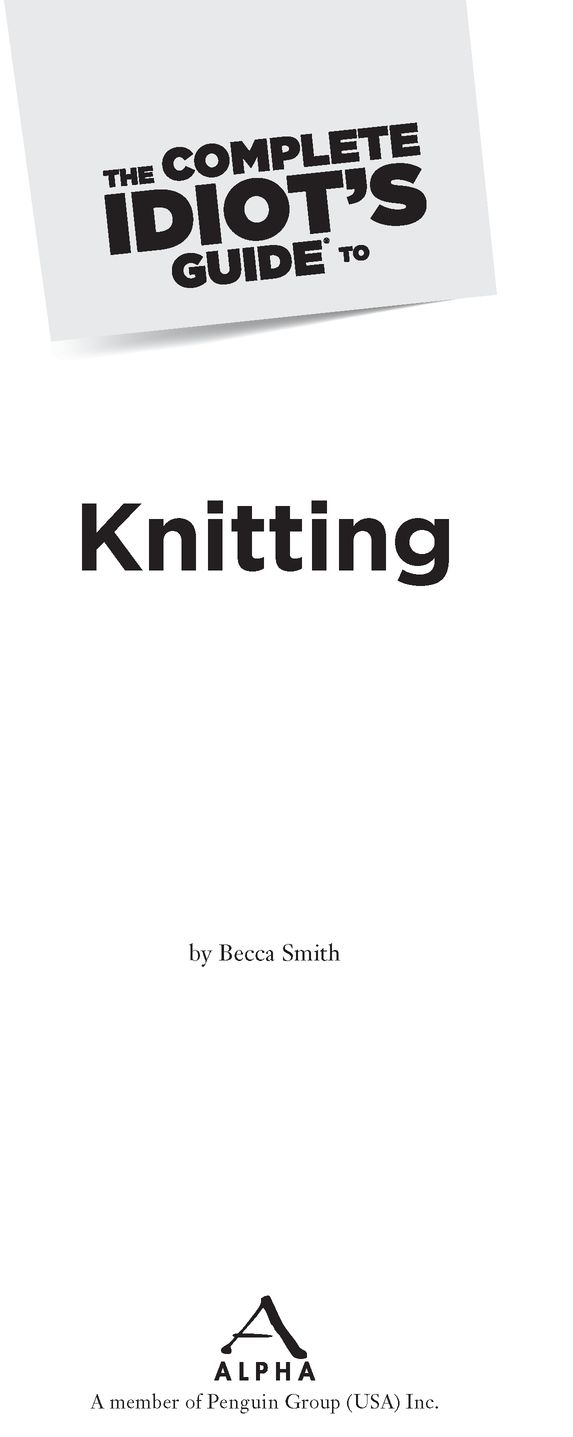Table of Contents
To Rebecca Horowitz, Sophie Block, and Jean Rubenthree generations of women who passed down the needle arts traditions to the next generations.
Introduction
I delight in all things handmade. To me, theres an aura and something magical in objects and clothing someone took the time and attention to create by hand. Its why I love museums, where you can see what people made with their hands generations ago. When you look at or touch something handcrafted, you are connecting with the creative spirit of the person who made it. Somewhere in the process of making the object, there was struggle, improvisation, frustration, and spontaneous problem-solving. Something handmade represents hours of challenges, both intellectual and physical. Such pieces usually dont look perfect (only machines make perfect stitches row after row), but thats part of their charm.
A person took raw materials and transformed them into a unique object or garment, giving you insight into the artist. He or she made choices in materials, colors, patterns, and texture. The piece is an expression of a moment, or series of moments. I am impressed with excellent craftsmanship. Did the person care about the concept, the finished product, or both? A handmade piece is a treasure to be cherished and passed down to another generation.
And so it is with knitting. Contemporary masters Kaffe Fasset, Nicky Epstein, Berta Karapetyan, and so many others have inspired me. They continue to explore the craft in fantastic ways. I have also seen wonderful, jaw-dropping work by people walking on the street or attending fiber shows. Ive been known to stop people to ask them about a scarf or sweater theyre wearing. I always look forward to complimenting them, especially if we engage in a discussion about how they made their piece. I love talking about the choices they made and how they came to making them.
As you go through the lessons of this book, you, too, will be making choices. What yarn will you use for a project? What color? Texture? Size? Even when youre following a pattern line by line, you have to make decisions along the way. Do you like the way the pattern looks with the yarn you chose? What if you change the stitch pattern? Will the pattern be more prevalent? Are the colors overpowering? Take joy in your decisions, knowing that if you dont like something, you can always rip it out! You are in control here. Its all up to you.
As far back as I can remember, I loved working with my hands. I really have to do it. I know something made with my hands will be unique because I never make anything the same way twice, and that gives me great pleasure. May you experience the same pleasure working with your hands. Enjoy!
How to Use This Book
Each chapter in this book is a lesson exploring techniques. (You will be using practice yarn to try them out and when youre finished, youll be able to incorporate all your swatches into another project, a mini sampler!) One chapter builds on another, so by the end, you should be able to read and understand just about any pattern you pick up. Along the way, I ask you to Swatch It! and knit 15 stitch patterns you can later assemble into a sampler. On other exercises, youll try out different knitting methods and techniques before you apply them to real-life projects.
Ive divided this book into six parts:
In Part 1, The Basics: Its All About Loops, you get to know the materials and tools you need to get started. You also learn how to begin knitting by creating a foundation row of loops along with the two basic stitches: knit and purl.
In Part 2, Knits and Purls: The Vs and the Bumps, you gain confidence and experience as you learn 13 increasingly difficult stitch patterns. You knit up each pattern in a square swatch that, when you combine them later, form a sweet sampler. Many of these patterns are incorporated into projects throughout the book.
In Part 3, Shaping, Knitting in the Round, and More, your knitting takes on new shapes and colors. Increasing and decreasing stitches are important techniques for making garments, and you learn those here. You also learn knitting in the round, which is used for a variety of projects, from handbags to sweaters. Learning how to change yarns and colors is an important element in many patterns.
Everyone wants great-fitting garments, and in Part 4, Intermediate Techniques, you learn how as you explore basic shaping and assembly techniques, including for sweaters, socks, and rugs.
The techniques and projects in Part 5, Advanced Techniques, are not out of reach for a new knitter. If youve followed through most of the chapters up to this point, you should be able to pick up intarsia (knitting with color), entrelac (knitting in geometric shapes), and felting (intentionally wetting and shrinking your knitting!).
You only need a pair of needles and some yarn to get started knitting, but later on you might want to have a full range of needles and other toolsalong with a better understanding of all the fibers available to you. Part 6, Yarns and Tools, introduces you to all these things.
In the back of the book, youll find two appendixes: a glossary full of knitting-related terms and abbreviations and an appendix of further resources to help you feed your need for more things knitting.
Extra Bits
Throughout the book, youll see nuggets of extra information, neatly packaged in sidebar boxes. Heres what to look for:
A STITCH IN TIME
These sidebars are full of interesting facts about knitting and knitters.
DEFINITION
Look to these sidebars for straightforward definitions of knitting terms, along with their abbreviations.
JAZZING IT UP
Check out these sidebars for creative ways to personalize your projects.
UNRAVELING
Like the unraveling of your stitches, this sidebar gives you advice on avoiding or correcting problems.
Acknowledgments
Theres a great and possibly overused saying: There is no I in team. The sentiment is so true, and the undertaking of this book was really a team endeavor. So many people around me helped in one way or another, and I sincerely thank them all.
I would not have written this book if it hadnt been for Steve Corcoran. Look Strategies marketing guru extraordinaire, he got wind of the opportunity and suggested my name. You dont say no to Steve. He is the eternal optimist and cheerleader, and he introduced me to my literary agent, Marilyn Allen. Marilyn and I clicked immediately, and she has provided tremendous guidance through the process, always positive and encouraging.



